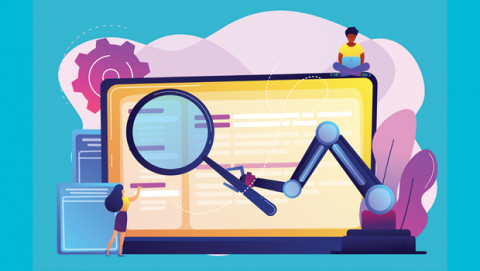The Broken Promise Of AI: What Went Wrong Between 2012 And 2022

Data science as a discipline was poorly understood, and most organizations had
not yet implemented a data strategy aligned with their business objectives.
Therefore, the first wave of data scientists had the time, training and support
of the business to experiment and explore possibilities, just as Patil and
Davenport had recommended. “Experimentation” is not scoped to any specific
strategic priority, however. In practice, data science was science—a pursuit of
knowledge. Real-world applications would have to wait. The consequence is that
AI as a concept matured but AI in practice faltered. Over time, data science
divisions moved further from the business strategy they were supposed to
support. Silos emerged between business and technical units. Small successes
were celebrated and held up as indicators that the process was working. But
scaling them proved difficult. Executives, unsure why the whole process isn’t
automated, continue to invest in people and technology to try to narrow the gap.
The problem they face isn’t technological, though. It’s cultural. The goal of a
company is not to set up a robust data environment; it’s to build, use and sell
data products.
Disconnect between CEOs & testers puts companies at risk of software failure
So, if there is an acknowledgment that testing is important and a fear that
failing to test software could lead to job losses, the obvious question is why
is software not tested properly? This often comes down to businesses not
thinking there is a viable, cost-effective option and choosing speed over
stability. However, there are more specifics we can unpack. When asked why their
software wasn’t tested properly before being released, CEOs and testers in the
same Censuswide survey cited a few primary reasons. The first is a reliance on
manual testing, which is time and resource intensive, so therefore often skipped
or rushed. This is compounded by the feeling that development cycles need to be
quicker to compete in a crowded market. The next most prominent reasons were a
lack of skilled developers available to conduct testing, or a lack of investment
in training and development to upskill those already on the team. ... There
needs to be a transition from manual testing towards automation to meet the
testing requirements of increasingly complex software, with businesses
struggling to scale their chosen solutions and leverage existing skills across
Quality Assurance departments.
Machines and Megaprojects – AI Trajectory 2023+

Disruptive technologies like AI, blockchain or metaverse herald new value and
wealth creation possibilities for many investors and technologists. But then
there is a much larger subset of humanity, people for whom the ascendance of
these new machines lives as an existential threat. Might the housekeeping robot
one day get fed up with serving the morning coffee and turn into a killer robot?
From one day to the next, the robot’s owners become slaves. We are
tongue-in-cheek here, but these are genuine concerns for many people. When it
comes to our jobs, careers, and employment, the big questions at the back of our
minds are, “Will my job become obsolete? Will I be terminated? Worse, will I be
unemployable, a little pawn in a world run by a super-intelligence?” These are
the ethical, moral, and practical questions in the background for which
solutions have yet to be invented. ... A hidden bias that disproportionately
favors one racial or age or gender group over another in crucial decisions such
as hiring individuals is one thing. More chillingly, consider the impact AI bias
could have in determining whether someone should be prosecuted or sentenced to
prison, and perhaps even the length of their sentence.
The future of finance belongs to open source

While crypto-currency pushes blockchain technologies' limits and makes the
headlines, financial services companies are known for their conservative
approach to software development. That doesn't mean they've been unfriendly to
Linux and open source. It's been quite the opposite. ... So it is, said Gabriele
Columbro, FINOS' Executive Director, that open-source adoption is continuing
"laying out the necessary building blocks for an organic, growing, and
sustainable open community in the industry. While we know there is still a lot
of work to do to reach full maturity, we're extremely proud of the major role
that FINOS played in opening up financial services to the disruptive innovation
benefits open source can deliver to this sector." Part of that work is that
compared with other sectors, such as IT, science, and telecom, financial service
companies lag behind in encouraging open-source contribution. Still, more than
half (54%) of respondents say contributing to open source improved the quality
of the software they are currently using. In addition, active participation in
open source was cited as a key factor in recruiting and retaining IT talent.
Citizens Are Happy To Hand Over Data So Long as Use Is Transparent
The old quip that ‘if you’re not paying for the product, you are the
product’ has not discouraged people from joining services such as Facebook,
which has seen exponential user growth since its launch. According to
Statista, 2.7 billion people use Facebook, a figure that has grown
remarkably consistently since the company passed 1 billion users in 2012.
However, you only have to look at the uproar that Facebook caused in January
when it updated WhatsApp’s terms of service to state that data from private
conversations would be used to inform ads on Facebook’s other platforms, to
see the value people put on transparency. The change led to a 4,200%
increase in user growth for rival app Signal. ... ForgeRock’s research
suggests that Singaporeans are not averse to providing access to their data,
so long as they are told upfront what it will be used for. The outcry over
TraceTogether provides a lesson on the importance of transparency when
talking to people about how their data is going to be used. This is only
going to become more crucial in the future.
2023 emerging AI and Machine Learning trends

There is a blurring of boundaries between AI and the Internet of Things.
While each technology has merits of its own, only when they are combined can
they offer novel possibilities? Smart voice assistants like Alexa and Siri
only exist because AI and the Internet of Things have come together. Why,
therefore, do these two technologies complement one another so
well? ... Moving on from the concept of Artificial Intelligence to
Augmented Intelligence, where decisions models are blended artificial and
human intelligence, where AI finds, summarizes, and collates information
from across the information landscape – for example, company’s internal data
sources. ... Composite AI is a new approach that generates deeper insights
from any content and data by fusing different AI technologies. Knowledge
graphs are much more symbolic, explicitly modeling domain knowledge and,
when combined with the statistical approach of ML, create a compelling
proposition. Composite AI expands the quality and scope of AI applications
and, as a result, is more accurate, faster, transparent ,and understandable,
and delivers better results to the user.
Is Your Business Ready for the Programmable World?

Imagine a world where the environment around you is as programmable as
software: a world where control, customization, and automation are enmeshed
in our surroundings. In this world, people can command their physical
environment to meet their own needs, choosing what they see, interact with
and experience. Meanwhile, businesses leverage this enhanced programmability
to reinvent their operations, subsequently building and delivering new
experiences for their customers. ... Leading enterprises will be at the
forefront of the programmable world, tackling everything from innovating the
next generation of customizable products and services, to architecting the
hyper-personalized and hyper-automated experiences that shape our future
world. Organizations that ignore this trend, fatigued from the promise of
IoT, will struggle as the world automates around them. This will delay
building the infrastructure and technology necessary to tap into this rich
opportunity, and many organizations may find themselves playing catchup in a
world that has already taken the next step.
Cyber security needs a makeover if we are to meet skills demand
While it’s true the profession is suited to logical thinkers, often with a
strength in maths, this is by no means the cliché that is so often
represented. Perception is incredibly important. Young people making
decisions on their future are influenced by so many factors. From more
traditional sources such as teachers, careers advisors and family, through
to how they perceive a job role or industry from the media they consume.
While there has been heavy-handed attempts to subvert stereotypes – just
think about the somewhat notorious government-backed advert depicting a
ballet dancer who could retrain to work in cyber security – I do believe the
overall sentiment was correct. Next year will see the launch of the cyber
security occupational specialism that will form part of the Digital T Level.
The qualification is aimed at 16 to 19 year olds and is equivalent to three
A Levels, with a focus on developing technical and vocational skills through
a mix of classroom based learning and an industry placement.
Want to set yourself apart? Own your job

Simplifying complexity is an art form, but such an exercise can easily fall
into the trap of oversimplification. And yet, through all my years of asking
leaders about the X factors that separate employees, I have wondered what
quality actually makes someone stand out and get that promotion. Here’s my
vote: an extreme sense of accountability and ownership of the job. People
with these qualities figure out how to get something done, even if the path
to success is unclear. When things get tough, they don’t point fingers or
throw up their hands in frustration or complain that something isn’t fair or
is too hard. Ownership is not just about having a strong work ethic—it’s
about having a sense of responsibility to follow through and deliver. I saw
this quality firsthand in many of the reporters I worked with during my 14
years as an editor at Newsweek magazine and the New York Times. Reporting
requires creativity, resourcefulness, and persistence. There were some
people who I just knew would get the work done. And when I’ve interviewed
business leaders about the qualities that set high performers apart, this
theme of responsibility has come up often.
Responsible AI by design: Building a framework of trust

Responsible AI practices have not kept pace with AI adoption for various
reasons. Some firms put responsible AI on hold because of legislative
uncertainty and complexity, thus delaying value realization on business
opportunities. Other challenges include concerns about AI’s potential for
unintended consequences, lack of consensus on defining and implementing
responsible AI practices, and over-reliance on tools and technology. To
overcome these challenges, it’s important to understand that technology
alone is insufficient to keep up with the rapidly evolving AI space. Tools,
bias detection, privacy protection, and regulatory compliance can lure
organizations into a false sense of confidence and security. Overly defined
accountability and incentives for responsible AI practices may look good on
paper but are often ineffective. Bringing multiple perspectives and a
diversity of opinions to technology requires a disciplined, pragmatic
approach. To adopt a responsible AI strategy, some key concepts must be kept
in mind, starting with setting a strong foundation.
Quote for the day:
"Courage is the ability to execute
tasks and assignments without fear or intimidation." --
Jaachynma N.E. Agu
No comments:
Post a Comment